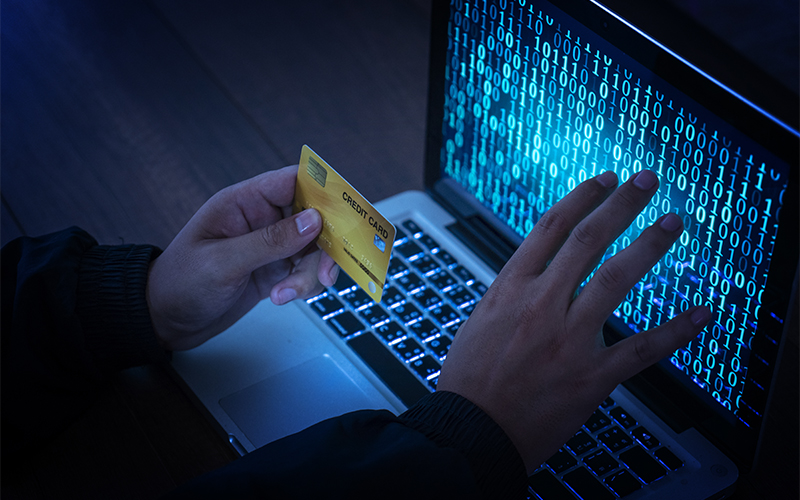BPM Analytics
Identity theft versus identity fraud
During the pandemic, a man from Rhode Island, USA, made fraudulent unemployment claims to the tune of $450,000 on 85 stolen identities of other citizens. According to reports, the culprit used personal information of other citizens and concealed his own identity through Voice over Internet Protocol phone numbers, overseas email accounts, and a series of VPN services. On the other side of the globe, a survey finds that 45% of Indians are concerned about identity theft during digital payments and 80% expect businesses to take necessary actions. With the boom in digital transactions and claims that often involve large sums of money, the chances of fraud are ever higher.
Difference between identity theft vs identity fraud
During identity theft, a fraudster hacks an individual’s assets, such as credit card or bank details. The fraudster then uses it to siphon off the money or make online purchases. In case of identity fraud, a fraudster steals your identity and carries out fraudulent transactions such as bank loan applications, unemployment benefits requests, and more. Often, identity theft and identity fraud work hand-in-hand.
For example, a fraudster steals the identity of a CEO and creates fake social media profiles. He then asks the employees to fill out forms containing sensitive information, initiate financial transactions, download malware on their systems, or provide access to their network. The impact could be catastrophic for the business if the workforce is in the large numbers. The fraudster could even apply for loans, and given the credit score of the CEO, could get away with a large sum of money.
How do identity theft and fraud happen?
Identifying different kinds of identity thefts and identity fraud provides better understanding on how the victims of fraud can protect themselves and take preventive measures.
Identity theft
Unsecure browsing:
Most websites use SSL encryption to protect customer information. But if you use any website that isn’t protected, hackers could access your information easily.Dark web:
Hackers often use the dark web where their browsing and other online activity remain hidden. If your information is sold on the dark web by hackers, it’s unclear how that information will be utilised.Malware activity:
By tricking you into installing a malware, hackers can access your system or network and even provide backdoor access to a third party.Phishing and spam:
Phishing is a message or an email that appears to be from a legitimate business. The goal is to make you enter your information and make purchases.Mail theft:
Many people carelessly discard letters from their banks containing their credit card or account information. Hackers could steal your information from physical mail or trash. Even if the information is insufficient to carry out a complete identity theft, the thief can use it to authenticate your identity.Wi-Fi hacking:
Many people don’t use an updated firewall or a VPN while conducting online transactions. Every time you connect your system to a public network, you could be at risk.
Identity fraud
Credit card identity theft:
This is one of the most common thefts where a hacker steals your credit card information to make purchases, duplicate cards, or sell the information for profit.Mobile phone theft:
From banking to online purchases and emails, everything happens on a mobile phone. Stealing a smartphone is perhaps the easiest way to access all the accounts.Credit/debit card skimming:
This involves a fake credit card machine installed in ATMs or fuel stations that copies your details and helps the hackers create duplicate cards.Tax ID theft:
Hackers could file taxes in your name and collect the refund. They can even fill in inflated figures to claim a higher refund.Data breaches:
It happens when fraudsters access the database of a company without legitimate authorisation. They could target credit card information, full names, and social security or national identification numbers.
Another scam picking pace is cryptocurrency money laundering where hackers can buy readymade crypto accounts on the dark web and facilitate fake transactions. Such instances of identity fraud and identity theft make it vital for businesses to have adequate mechanisms to not only detect but proactively predict potential breaches.
For organisations on the digital transformation journey, agility is key in responding to a rapidly changing technology and business landscape. Now more than ever, it is crucial to deliver and exceed on organisational expectations with a robust digital mindset backed by innovation. Enabling businesses to sense, learn, respond, and evolve like a living organism, will be imperative for business excellence going forward. A comprehensive, yet modular suite of services is doing exactly that. Equipping organisations with intuitive decision-making automatically at scale, actionable insights based on real-time solutions, anytime/anywhere experience, and in-depth data visibility across functions leading to hyper-productivity, Live Enterprise is building connected organisations that are innovating collaboratively for the future.
How can Infosys BPM help?
The comprehensive fraud detection and prevention system by Infosys BPM helps businesses analyse huge and complex data for anomalies, reduce false positives, and utilise advanced end-to-end fraud management solutions. View the full fraud detection and prevention options.






